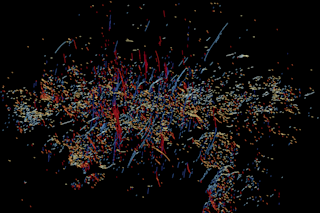An enduring astronomical mystery has deepened yet again. Peculiar one-dimensional strands that extend up from the galactic core are not alone, according to a new paper out today. Astronomers have discovered shorter, dashlike horizontal strands as well. Like the others, they are difficult to explain.
Northwestern University astronomer Farhad Yusef-Zadeh discovered the vertical strands, or filaments, in the 1980s and greatly expanded their known ranks in 2022, to about 1,000. When he found the horizontal ones fanned out to one side of the galactic core, it took him by surprise.
“I’m used to them being vertical,” he says in a press release. “I never considered there might be others along the [galactic] plane.”
The vertical strands extend up to a massive distance – some 150 light-years, about 240,000 times the distance from the sun to Pluto.
These filaments appear to be composed of huge amounts of cosmic ray electrons moving ...














